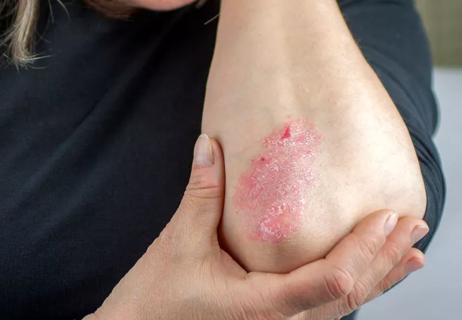This self-soothing piece of jewelry may help you cope in tense situations

Put a ring on it? A popular TikTok trend, an anxiety ring is a piece of jewelry designed to help those who feel nervous or experience panic.
Advertisement
Cleveland Clinic is a non-profit academic medical center. Advertising on our site helps support our mission. We do not endorse non-Cleveland Clinic products or services. Policy
Worried about a big work presentation or stressed about a big life change like buying a house or having a baby? Anxiety can affect us at different times in our lives. You may have difficulty concentrating, experience sweating or heart palpitations and have trouble sleeping.
But you’re not alone. Anxiety disorders are the most common mental health conditions in the U.S., affecting about 40 million Americans.
Can an anxiety ring really help you cope? Psychologist Chivonna Childs, PhD, explains how an anxiety ring works and if it’s worth trying out.
An anxiety ring is literally a ring you can wear on your finger.
“It can have beads on it that you can roll around on the ring. Or it has a band within bands, where the center band twists around if you move it with your fingers or your thumb,” says Dr. Childs. “It helps with self-soothing.”
You can find all different types of anxiety rings online. There’s a variety of metal, designs and personalization. But Dr. Childs suggests finding an option that you like.
“Buy something that speaks to who you are as a human being,” she says. “Look for something that resonates with your spirit.”
Anxiety rings gained popularity on TikTok, the social media app. Content creators are constantly sharing tips, advice and hacks on how to live a healthier life.
Advertisement
Not everything seen on TikTok works, so make sure you do your homework before trying out something you see on social media. If you’re still unsure, you can ask your doctor for advice.
Anxiety rings are easy to use. Just place one on a finger, and when you feel anxiety, concentrate on rolling the beads or twisting the band.
“Anything that you do that distracts you from thinking about what makes you anxious can help,” notes Dr. Childs. “It’s a type of grounding technique, where you can redirect your thoughts.”
It’s a good option to have in your mental health toolbox, but you may need to look for other ways to manage your anxiety.
Anxiety can become a problem when it overrides our logic. You may worry about your finances, your job or your family to the point that it affects your mental health as well as your physical health.
“We can have different types of anxieties that can turn into phobias,” Dr. Childs says. “It can turn into generalized anxiety, where we really don’t know where the anxiety is coming from, but it’s in excess of what the situation calls for.”
So while anxiety rings may calm you down in those stressful moments, you may need more help.
“Anxiety rings are not a cure,” says Dr. Childs. “You may want to consider talking to a therapist or your doctor.”
Anxiety rings are the cousins to fidget spinners, a toy designed with a ball bearing in the middle that allows users to rotate or spin the object between their fingers.
The goal of both items is to help alleviate anxiety by getting you to focus on them and not whatever idea, task or situation is causing you anxiety.
So is one better than the other? It depends, says Dr. Childs.
“An anxiety ring might be a better choice aesthetically,” she says. “An anxiety ring is going to allow you to be incognito. Nobody is going to know what you’re doing.”
You can be in professional or personal situations and discreetly use your anxiety ring. Whereas fidget spinners are a little bit harder to conceal and may raise questions from others about why you’re using it.
“You might worry what other people think about you,” says Dr. Childs. “Worrying might increase your anxiety instead of resolving it.”
There are plenty of ways to help alleviate anxiety. Here are a few techniques to consider:
Advertisement
And don’t forget that there are options that you can discuss with your doctor. Medication and therapy are very helpful when managing anxiety.
“If your anxiety is so severe that you’re unable to function, you may need medication,” says Dr. Childs. “There’s also cognitive behavioral therapy that helps us challenge our thoughts, so that we can get to the core of the anxiety.”
Advertisement
Learn more about our editorial process.
Advertisement

Fill your coping toolbelt with healthy skills like getting outside, writing in a journal, volunteering, laughing or talking with a friend

We all experience some stress from time to time, but chronic stress can contribute to health issues like diabetes and cardiovascular disease

Getting outside, eating a healthy diet, taking up journaling, listening to music — even cuddling a pet — can provide stress relief

Give these 30+ grocery items a try to help find relief

In response to stress or danger, your brain responds by either defending itself, running away, stopping or reconciling

From nausea, weight gain and eczema, stress can affect your immune system in many ways

Stress hormones trigger cravings in an attempt to keep us safe from danger

From stomachaches and hives to sleepless nights and missed periods, stress can make an impact

The best parenting style balances enforcing rules and showing plenty of love

Tips include cutting back on sugar, focusing on exercise and managing stress

It can be harder to let go when you’ve invested time, energy and emotions — but it might be the healthier choice long term